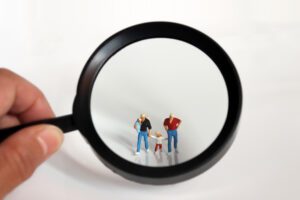Also known as implicit bias, unconscious biases are learned stereotypes we hold about people based on factors like ethnicity, weight, gender, accent, disabilities, and other similarly superficial traits. Often we’re not aware of these biases despite them informing our attitudes and behaviors–hence the unconsciousness of them.
Where do these biases come from?
Our brains are supercomputers, but to be as efficient as they are it’s essential for them to prioritize and categorize the information we take in. If we were to consciously absorb every detail of everything we saw or every interaction we have it would be impossible for us to do anything.
Unconscious bias occurs when our minds use stereotypes to free up our mental space. When you’re able to put people into boxes, you can efficiently react to them. At its best, this skill is what allows you to identify threats quickly. At its worst, though, it’s what causes us to underestimate or discriminate against individuals or groups.
How can you avoid an unconscious bias?
It’s important to reiterate that these biases are unintentional. You may not have been previously aware of them. This doesn’t mean you can’t or shouldn’t avoid them as much as possible, but it also doesn’t mean you’re inherently racist or sexist.
Also, realize that sometimes unconscious biases aren’t about acting unfavorably, but favorably. For example, studies have shown that we often favor taller people, preferring them for certain positions. However, by doing so, you may end up promoting an employee over someone more qualified without proper justification.
So whether it’s through favoring or dismissing a person or group, unconscious bias can damage your business. It can lead to poorly-utilized human resources, resentment, or even lawsuits.
Here are a few ways to avoid unconscious bias for a more equal workplace.
- Question your motives. When you find yourself reacting to an employee in a certain way, take a moment to ask yourself why. For example, if a female team member suggests a solution that you immediately want to reject, ask yourself if the idea itself lacks merit or if you’re falling into the trap of seeing women who act ambitiously as aggressive or mean.
- Expand your frame of reference. One reason unconscious biases form is from limited exposure to other groups. Biases toward, say, people who are overweight or have a physical disability of usually from interactions with one or a tiny number of people who fall into that group, or from stories someone hears about them and not first-hand experience.
These biases start to fall away the more people you get to know from those groups. People rarely conform to their group’s stereotypes, and seeing that regularly can correct any biases you have. So make it a point to meet or get to know people you feel unconsciously biased towards.
- Increase accountability. When the buck stops with you on all decisions, it’s easy to miss your own blindspots caused by unconscious bias. Make sure that decisions aren’t based on only one voice, but rather include several perspectives. This can help balance different biases and give a more realistic picture of situations.








